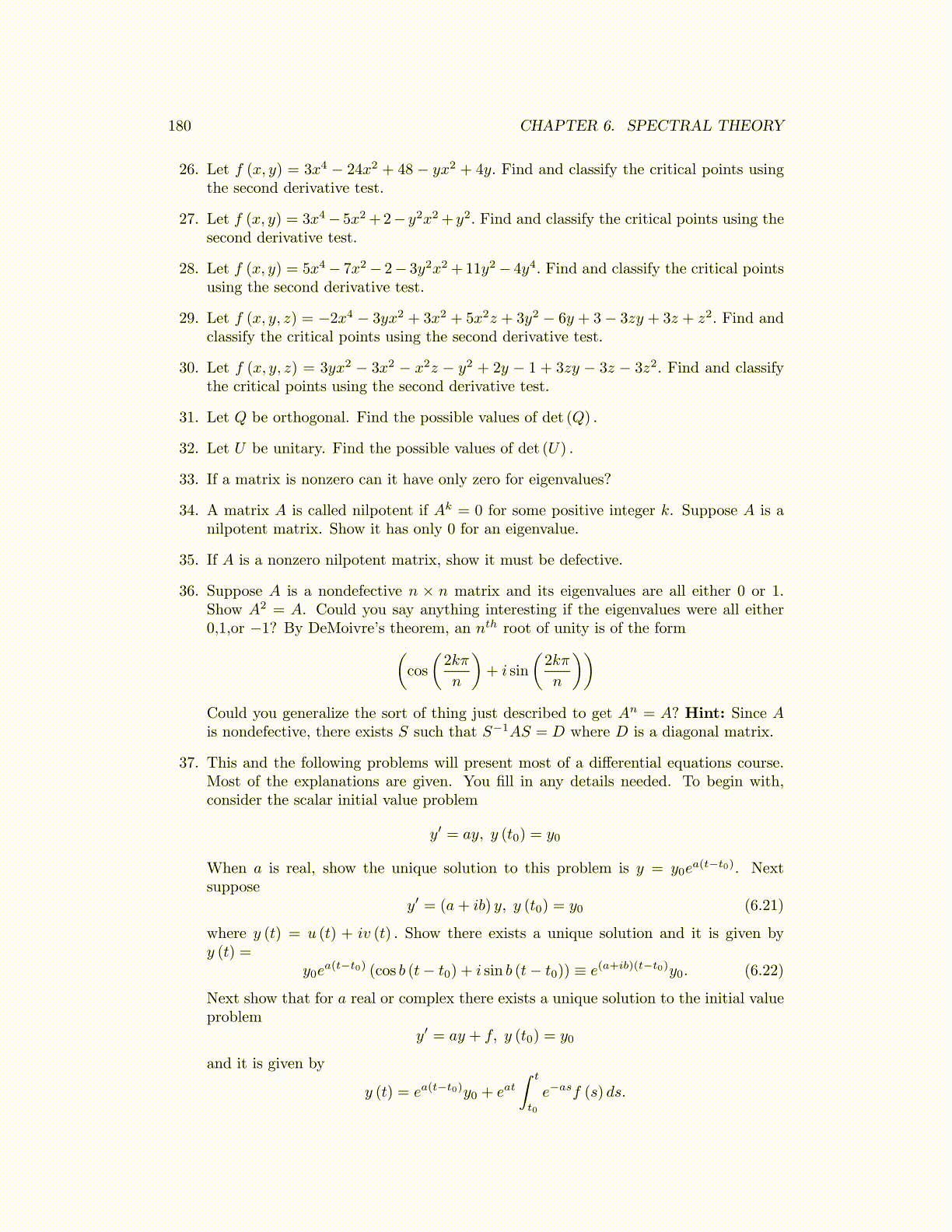
180 CHAPTER 6. SPECTRAL THEORY
26. Let f (x, y) = 3x4 − 24x2 + 48 − yx2 + 4y. Find and classify the critical points usingthe second derivative test.
27. Let f (x, y) = 3x4− 5x2+2− y2x2+ y2. Find and classify the critical points using thesecond derivative test.
28. Let f (x, y) = 5x4 − 7x2 − 2− 3y2x2 +11y2 − 4y4. Find and classify the critical pointsusing the second derivative test.
29. Let f (x, y, z) = −2x4 − 3yx2 + 3x2 + 5x2z + 3y2 − 6y + 3− 3zy + 3z + z2. Find andclassify the critical points using the second derivative test.
30. Let f (x, y, z) = 3yx2 − 3x2 − x2z − y2 + 2y − 1 + 3zy − 3z − 3z2. Find and classifythe critical points using the second derivative test.
31. Let Q be orthogonal. Find the possible values of det (Q) .
32. Let U be unitary. Find the possible values of det (U) .
33. If a matrix is nonzero can it have only zero for eigenvalues?
34. A matrix A is called nilpotent if Ak = 0 for some positive integer k. Suppose A is anilpotent matrix. Show it has only 0 for an eigenvalue.
35. If A is a nonzero nilpotent matrix, show it must be defective.
36. Suppose A is a nondefective n × n matrix and its eigenvalues are all either 0 or 1.Show A2 = A. Could you say anything interesting if the eigenvalues were all either0,1,or −1? By DeMoivre’s theorem, an nth root of unity is of the form(
cos
(2kπ
n
)+ i sin
(2kπ
n
))Could you generalize the sort of thing just described to get An = A? Hint: Since Ais nondefective, there exists S such that S−1AS = D where D is a diagonal matrix.
37. This and the following problems will present most of a differential equations course.Most of the explanations are given. You fill in any details needed. To begin with,consider the scalar initial value problem
y′ = ay, y (t0) = y0
When a is real, show the unique solution to this problem is y = y0ea(t−t0). Next
supposey′ = (a+ ib) y, y (t0) = y0 (6.21)
where y (t) = u (t) + iv (t) . Show there exists a unique solution and it is given byy (t) =
y0ea(t−t0) (cos b (t− t0) + i sin b (t− t0)) ≡ e(a+ib)(t−t0)y0. (6.22)
Next show that for a real or complex there exists a unique solution to the initial valueproblem
y′ = ay + f, y (t0) = y0
and it is given by
y (t) = ea(t−t0)y0 + eat∫ t
t0
e−asf (s) ds.